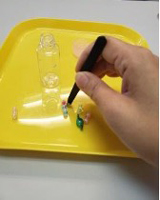Author: By Principal Ng SAU MAN
Sun Island English Kindergarten (Sai Kung Branch)
Physical activity development is extremely important for individuals. If we want young children to develop their bodies and minds in a healthy and comprehensive way, we cannot overlook training both their large and small muscles. The period from zero to six years old is a golden development period.
Fine motor skills involve coordinating precise movements, such as playing musical instruments, pressing playdough, flipping through book pages, and twisting bottle caps. It also includes using both hands together, such as when stringing beads, washing hands, turning shirts inside out, twisting towels, and tying shoelaces.
Similarly, when parents notice that children are slower, weaker, or exerting excessive effort and lack agility when colouring, tracing lines, or copying, it may indicate difficulties. Colouring outside the lines, writing irregularly, and a lack of neatness are common signs. Copying activities can be quite challenging, as children may struggle to follow verbal instructions, appear inattentive or forgetful, have difficulty maintaining a fixed sitting posture, and exhibit poor concentration. They may also frequently knock over objects, have difficulty buttoning or tying shoelaces, and struggle with age-appropriate activities. These differences in small muscle development require prompt attention and training.
Parents can incorporate fun training activities into their daily lives to enhance their child’s fine motor skills.
Training: Finger dexterity, coordination of fingers, palms, and wrists.
The following four sets of activities can enhance the overall flexibility of the hand and improve their ability to engage in other small muscle activities.
 | Training tools: Plates, tweezers, small bottles, beads. |
  | Training Step 1: |
   | Training Step 2: |
  | Training Step 3: |
  | Training Step 4: |
Finally, here are some small tips for parents and an educational mnemonic for their children.
- Addition: Encourage children to engage in activities such as walking, playing with toys, engaging in arts and crafts and exploring books.
- Subtraction: Reduce screen time from phones and television.
- Multiplication: Encourage children to learn self-care skills and do things on their own with genuine encouragement.
- Division: Patience is key. Take the time to teach children slowly, allowing them to learn, do, and master tasks at their own pace.


